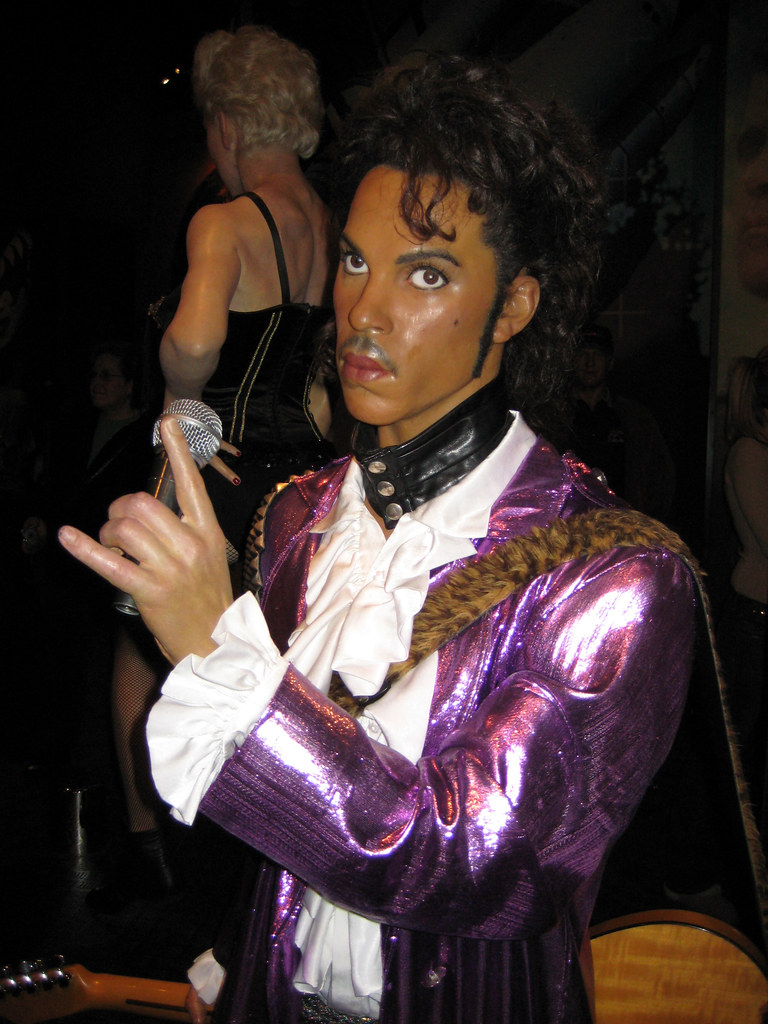
Prince Rogers Nelson, an artist synonymous with boundless innovation and unparalleled virtuosity, carved an indelible mark across the landscape of popular music for over four decades. From his Minneapolis beginnings to global icon status, Prince transcended genres, defied conventions, and continually reimagined artistic expression. Billboard magazine lauded him as “the greatest musical talent of his generation,” a testament to his flamboyant showmanship, astonishing vocal range, and mastery across a vast array of instruments.
His extraordinary career was characterized by a ceaseless drive to create and push boundaries, blending funk, disco, R&B, rock, and more into the distinctive “Minneapolis sound.” Prince meticulously crafted his own albums, often playing every instrument himself, cementing his reputation as a complete musical architect. This exploration delves into the foundational chapters of Prince’s life, tracing his meteoric rise from prodigy to the *Purple Rain* phenomenon, and the initial stirrings of the independent spirit that would define his later years.

1. **Formative Years and Early Musical Stirrings**Born Prince Rogers Nelson on June 7, 1958, in Minneapolis, his musical lineage was strong; his mother, Mattie Della, was a jazz singer, and his father, John Lewis Nelson, a pianist and songwriter who performed as Prince Rogers. Though he preferred “Skipper” in childhood, this familial connection instilled an early sense of musical destiny. Prince’s youth was marked by personal trials, including being “born epileptic” and experiencing seizures. A profound moment recounted his telling his mother, “‘Mom, I’m not going to be sick anymore,’ and she said, ‘Why?’ and I said, ‘Because an angel told me so.'”
Despite the instability of his parents’ divorce when he was ten, which led to shifting homes, Prince’s artistic compulsion remained constant. He composed his first song, “Funk Machine,” at seven on his father’s piano. Key influences during this period included his stepfather, Hayward Baker, who introduced him to James Brown in concert. His father also bought him his first guitar, fostering his burgeoning talent before Prince moved in with the Anderson family, befriending André Cymone, a future collaborator.
Beyond music, Prince cultivated a diverse array of talents. He notably “helped test the original The Oregon Trail video game” at Bryant Junior High, engaged in multiple sports at Central High School, and received classical ballet training. This dedication to dance would later inspire him “to save the failing Joffrey Ballet in Chicago during the 1990s.” By 1973, his remarkable “musical talent, early mastery of a wide range of instruments, and work ethic” had already begun to impress peers like songwriter and producer Jimmy Jam, signaling the arrival of a prodigious talent.
Read more about: Tito Jackson: A Poignant Look at the Life and Legacy of the Jackson 5’s Enduring Guitarist
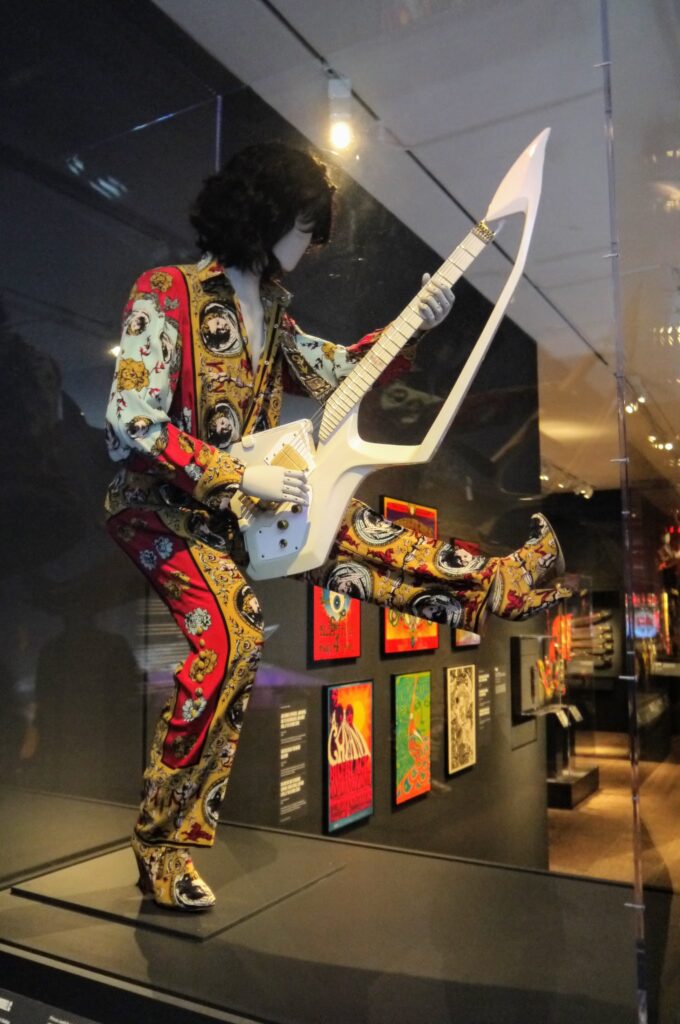
2. **The Ascent to Stardom: Early Albums and Breakthrough**Prince’s professional journey began in the mid-1970s, contributing guitar tracks and co-writing “Just Another Sucker” for Pepe Willie’s band 94 East in 1975. A pivotal demo tape recorded with producer Chris Moon in 1976 ultimately led to a management deal with Owen Husney and sparked significant interest from major labels. In 1977, Prince secured a landmark recording contract with Warner Bros. Records, crucially retaining creative control for three albums and his publishing rights—an extraordinary achievement for a young artist.
His debut, *For You*, released in April 1978, was a bold statement of artistic independence; its notes proclaimed Prince “wrote, produced, arranged, composed, and played all 27 instruments on the recording,” a testament to his comprehensive musicianship. Though costly, the album introduced his innovative sound, with “Soft and Wet” reaching No. 12 on the Hot Soul Singles chart. By 1979, having formed a backing band, his self-titled album, *Prince*, achieved platinum status, soaring to No. 4 on the Billboard Top R&B/Black Albums charts. It yielded the million-selling “I Wanna Be Your Lover,” which climbed to No. 11 on the Billboard Hot 100 and topped the Hot Soul Singles chart for two weeks.
Prince’s artistic fearlessness escalated with the 1980 release of *Dirty Mind*, described as a “stunning, audacious amalgam of funk, new wave, R&B, and pop, fueled by grinningly salacious and the desire to shock.” This album, containing explicit material, was certified gold. His visibility continued to rise through performances as an opening act for Rick James and his first *Saturday Night Live* appearance in 1981. This period culminated with *Controversy* in October 1981, an album exploring new sonic territory, cementing his distinctive use of abbreviated spelling, alongside the formation of his prolific side project, The Time.
Read more about: Why the Trail Went Cold: Tracing the Retreat of Country Firebrand Gretchen Wilson from the Limelight
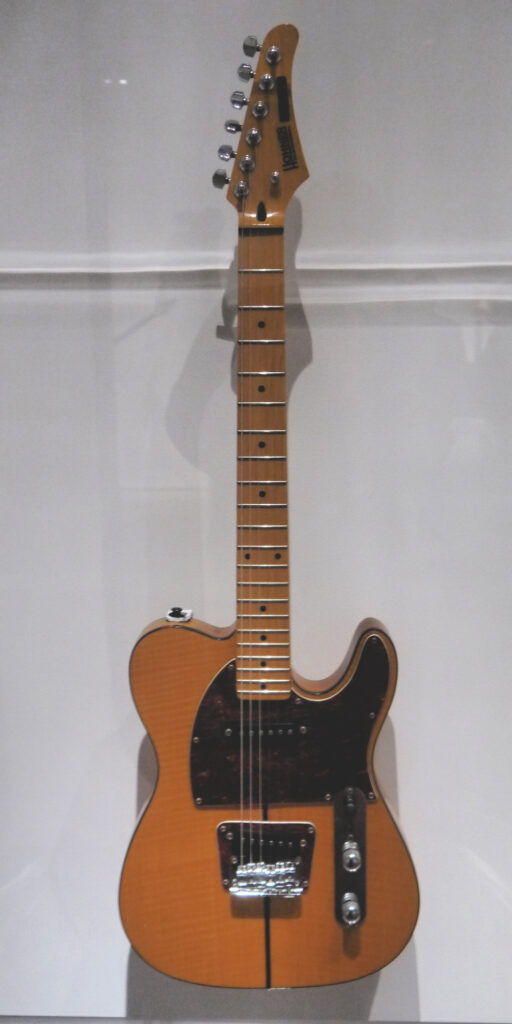
3. **The *Purple Rain* Phenomenon: Cinematic and Musical Triumph**The early 1980s proved a pivotal prelude to Prince’s mainstream explosion. In late 1982, he released the double album *1999*, a powerful protest against nuclear proliferation that became his first top 10 hit internationally. The album featured “Little Red Corvette,” a groundbreaking track whose video, alongside Michael Jackson’s “Billie Jean,” was among the first by Black artists to receive heavy rotation on MTV, challenging the channel’s racial programming biases. *1999* sold over four million copies and earned Prince his inaugural Grammy Award nomination.
During this period, Prince’s backing ensemble was formally recognized as The Revolution, becoming central to his live performances and creative process. Comprising Lisa Coleman, Doctor Fink, and Bobby Z., with Wendy Melvoin eventually replacing Dez Dickerson, The Revolution fostered a dynamic synergy. Prince’s ambitious vision extended beyond music, as his manager, Bob Cavallo, facilitated a major motion picture deal, an audacious move given his limited mainstream exposure.
The culmination of this ambition arrived in 1984 with the simultaneous release of the film *Purple Rain* and its soundtrack. The film, starring Prince in a loosely autobiographical role, was a critical and commercial triumph, grossing “$70.3 million worldwide” and hailed as “one of the greatest musical films.” Its soundtrack, recorded with The Revolution, was a phenomenal success, selling over 13 million copies in the US and dominating the Billboard 200 for “six consecutive months.” *Purple Rain* propelled Prince into unprecedented superstardom, making him “the first singer to simultaneously have a number-one film, album and single in the US,” a feat achieved with “When Doves Cry” and “Let’s Go Crazy.” This impact garnered an Academy Award and two Grammys, and famously led to the founding of the Parents Music Resource Center (PMRC) due to “Darling Nikki,” underscoring his provocative power.
Read more about: The Indelible Reign of Prince: A Forbes Retrospective on the Musical Genius, Financial Acumen, and Cultural Impact of an Icon

4. **Artistic Independence and Provocation: The Era of *Sign o’ the Times* and *The Black Album***Following *Purple Rain*’s monumental success, Prince demonstrated a restless artistic spirit, announcing in 1985 his intention to discontinue live performances and music videos after his next album. His subsequent recordings, *Around the World in a Day* (1985) and *Parade* (1986), continued his commercial momentum, both charting high and producing hits like “Raspberry Beret” and the No. 1 single “Kiss.” However, his self-directed second film, *Under the Cherry Moon* (1986), despite its platinum-selling soundtrack, was critically panned, though some critics later “re-evaluated… and declared it a cult classic.” This period also saw Prince disband The Revolution, a significant shift toward a new musical direction.
This era was intensely creative, marked by two shelved projects, *Dream Factory* and *Camille*, which explored an “androgynous persona.” These efforts eventually consolidated into an ambitious three-LP album, *Crystal Ball*, which Warner Bros. insisted on trimming. The result was the critically acclaimed double album *Sign o’ the Times*, released on March 31, 1987, hailed by critics as “the greatest work of his career.” It peaked at No. 6 on the Billboard 200, yielding hit singles like the title track and “U Got the Look” (a duet with Sheena Easton), and selling an impressive 3.2 million copies.
Perhaps the most enigmatic release of this period was *The Black Album*, an instrumental, funk, and R&B-themed effort that was recalled after “500,000 copies had been pressed” due to Prince’s “spiritual epiphany that the album was evil.” He swiftly recorded *Lovey* (1988), serving as its “spiritual opposite,” which reached No. 11 on the Billboard 200. Although the subsequent *Lovesexy World Tour* was “well-received by huge crowds,” it “failed to make a net profit due to the expensive sets and props,” highlighting the scale of Prince’s ambitious live productions and the financial challenges even for a superstar.
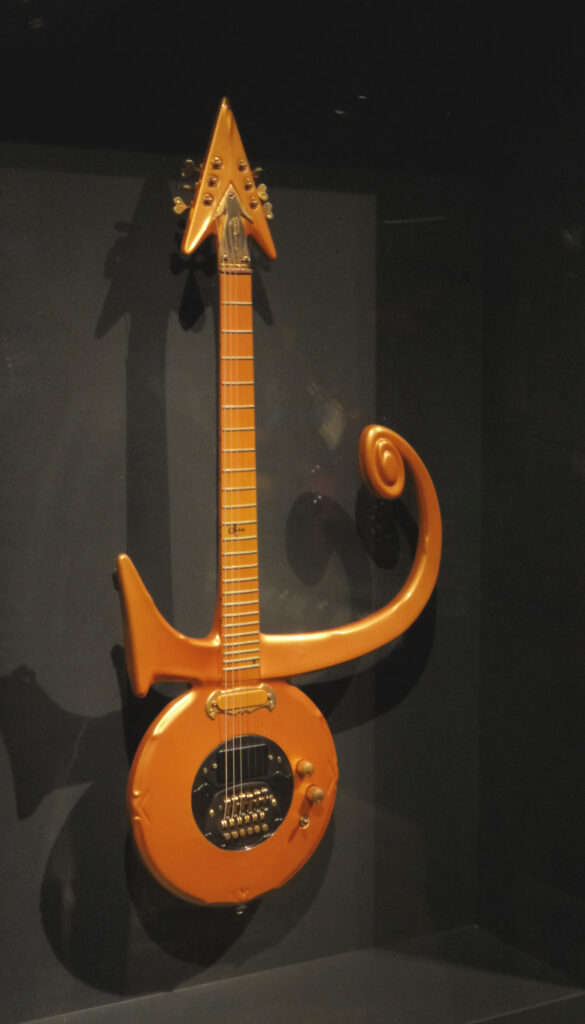
5. **The Symbol of Rebellion: Name Change and Warner Bros. Dispute**The late 1980s saw Prince continue his prolific output, including a notable collaboration on Madonna’s 1989 album *Like a Prayer*. His focus then shifted to director Tim Burton’s request for songs for the *Batman* (1989) film, for which Prince swiftly produced an entire nine-track album. This soundtrack was a commercial juggernaut, hitting No. 1 on the Billboard 200 and selling 4.3 million copies, with “Batdance” topping charts. However, this success came at a cost: Prince “had to sign away all publishing rights to the songs on the album to Warner Bros.,” a concession that foreshadowed future contractual battles over creative control.
Prince’s fourth film, *Graffiti Bridge* (1990), released alongside its album, marked a period of transition. While the album charted at No. 6 and produced the No. 1 R&B single “Thieves in the Temple,” the film itself proved a “box-office flop.” This prompted Prince to redefine his musical direction, leading to the dawn of 1991 and the introduction of his new backing band, The New Power Generation. Their “significant input” shaped the commercial triumph of *Diamonds and Pearls*, which reached No. 3 on the Billboard 200 and spawned multiple hit singles, including the US No. 1 “Cream,” affirming Prince’s continued chart dominance.
In 1992, Prince renewed his contract with Warner Bros. in a reportedly “$100 million” deal, but this agreement quickly dissolved into one of music history’s most famous contractual disputes. His 14th studio album, titled with an “unpronounceable symbol” (“Love Symbol #2”), became an emblem of his growing rebellion against Warner Bros.’s refusal “to release Prince’s enormous backlog of music at a steady pace.” In 1993, he formally adopted the “Love Symbol” as his stage name, becoming “the Artist Formerly Known as Prince” (TAFKAP), an unprecedented act. Prince’s defiance escalated into public protests, notably appearing with “slave” written on his face, as he tirelessly worked to fulfill his contractual obligations with albums like *Come* and *The Gold Experience*. By 1996, with the release of *Chaos and Disorder* and the submission of *The Vault: Old Friends 4 Sale*, Prince finally completed his contract and was “released from his contract,” ushering in an era of hard-won independence.

6. **The Emancipation: A New Era of Artistic Freedom (1996-2000)**Having successfully completed his contractual obligations to Warner Bros., Prince ushered in a new chapter defined by unprecedented artistic liberation. The year 1996 marked his formal release from the label, immediately paving the way for a declaration of creative sovereignty manifested in the sprawling *Emancipation*. This period represents a pivotal moment where Prince exercised the full extent of the independent spirit he had so fiercely fought for, establishing NPG Records as his primary vehicle.
*Emancipation* itself was an ambitious statement: a 36-song, three-CD set, with each disc precisely 60 minutes long. This expansive output not only showcased his prolificacy but also his willingness to explore new territory, notably featuring his first-ever covers of other artists’ songs, including Joan Osborne’s ‘One of Us’ and Thom Bell and Linda Creed’s ‘Betcha by Golly Wow!’. The album, distributed through EMI, was a commercial success, earning Platinum certification from the RIAA and signifying a triumphant return to the mainstream on his own terms.
Following *Emancipation*, Prince continued to innovate with releases such as the five-CD collection *Crystal Ball* in 1998, which comprised a wealth of unreleased material. While the distribution of *Crystal Ball* proved challenging, underscoring the complexities of independent releases, it was swiftly followed by the *Newpower Soul* album. During this period, his collaborative spirit also thrived, evidenced by his contributions to Chaka Khan’s *Come 2 My House* and Larry Graham’s *GCS2000*, both released on the NPG label.
By 1999, Prince made a strategic move, signing once again with a major label, Arista Records, for the release of *Rave Un2 the Joy Fantastic*. This marked a temporary return to traditional distribution channels while he continued to explore direct engagement, culminating in the pay-per-view concert *Rave Un2 the Year 2000*, which broadcast footage from his December 1999 tour, featuring an array of guest musicians.

7. **Digital Pioneering and Direct Fan Engagement (2000-2003)**The turn of the millennium marked another significant evolution in Prince’s career, particularly in his approach to distribution and fan interaction. On May 16, 2000, his publishing contract with Warner/Chappell expired, prompting him to officially cease using the “Love Symbol” as his name and revert to “Prince.” He emphasized that this decision symbolized his freedom from undesirable associations with his former name, though the symbol persisted as a prominent logo and design element.
This era saw Prince embrace digital platforms as a primary means of releasing new music, pioneering online distribution through his Internet subscription services, NPGOnlineLtd.com and later NPGMusicClub.com. This innovative strategy allowed him to bypass traditional gatekeepers and deliver a continuous stream of albums directly to his dedicated fanbase, including projects like *The Rainbow Children* (2001), *One Nite Alone…* (2002), and subsequent releases such as *Xpectation*, *C-Note*, *The Chocolate Invasion*, and *The Slaughterhouse* in 2003-2004.
Despite his independent ventures, the enduring commercial appeal of his earlier work was recognized by Warner Bros., which released the compilation *The Very Best of Prince* in 2001, featuring many of his seminal 1980s singles. In 2002, Prince further expanded his catalog with his first live album, *One Nite Alone… Live!*, a three-CD box set capturing performances from his *One Nite Alone… Tour* and including an “aftershow” disc entitled *It Ain’t Over!*.
Crucially, this period solidified his commitment to innovative fan engagement. The NPG Music Club served as a central hub, complemented by pre-concert sound checks and annual “celebrations” at Paisley Park. These events invited fans into his creative sanctuary for tours, interviews, discussions, and exclusive listening sessions, even leading to filmed fan discussions for an unreleased documentary directed by Kevin Smith, demonstrating an unparalleled connection with his audience.
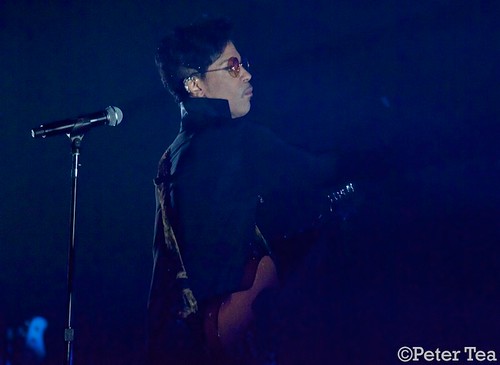
8. **Mainstream Resurgence: Grammys, Hall of Fame, and Musicology (2004)**The year 2004 proved to be a powerful moment of mainstream resurgence and widespread recognition for Prince, reaffirming his status as a living legend. It began with an electrifying performance at the 46th Annual Grammy Awards alongside Beyoncé, where they delivered a dynamic medley of his classics—’Purple Rain,’ ‘Let’s Go Crazy,’ ‘Baby I’m a Star’—and Beyoncé’s ‘Crazy in Love.’ This captivating opening act showcased his enduring charisma and undeniable stage presence to a global audience.
Just a month later, Prince was deservedly inducted into the Rock and Roll Hall of Fame, a profound acknowledgment of his indelible impact on music. The award was presented by Alicia Keys, along with Big Boi and André 3000 of OutKast, underscoring his influence across genres and generations. During the ceremony, in addition to performing a trio of his own hits, Prince delivered an iconic two-minute guitar solo during a tribute to fellow inductee George Harrison’s ‘While My Guitar Gently Weeps,’ a moment widely hailed as one of the greatest live guitar performances in rock history.
In April 2004, Prince released *Musicology* through a unique one-album agreement with Columbia Records. The album’s success was significantly aided by an innovative distribution model where CDs were included as part of concert ticket purchases, directly contributing to its chart performance under the then-prevailing chart rules. This strategy propelled *Musicology* into the top five on international charts, including the US, UK, Germany, and Australia, demonstrating his ability to innovate both musically and commercially.
The critical reception for *Musicology* was overwhelmingly positive, underscoring its artistic merit and commercial appeal. Three months after its release, *Spin* magazine boldly named him the greatest frontman of all time. Furthermore, *Rolling Stone* recognized him as the highest-earning musician in the world that same year, with an annual income of $56.5 million, largely attributed to his highly successful *Musicology Tour*. The album itself earned two Grammy Awards: Best Male R&B Vocal Performance for ‘Call My Name’ and Best Traditional R&B Vocal Performance for the title track, solidifying its legacy as a modern masterpiece.
*Rolling Stone* further cemented his standing by ranking Prince No. 27 on their comprehensive list of the 100 Greatest Artists of All Time, a testament to his profound and lasting influence across the musical spectrum. This period unequivocally re-established Prince’s dominant position in the contemporary music landscape, proving that his creative fire burned as brightly as ever.
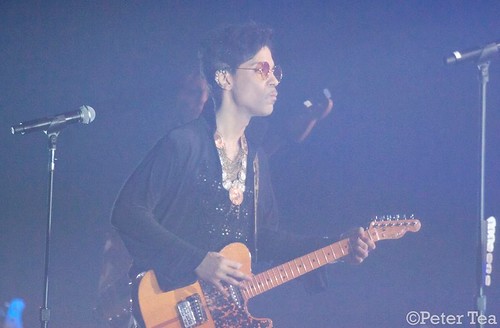
9. **Continued Success and Innovation with *3121* (2005-2006)**Prince’s artistic vitality continued unabated in the mid-2000s, marked by significant collaborations and a renewed chart-topping presence. In April 2005, he lent his distinctive guitar talents, accompanied by En Vogue on backing vocals, to Stevie Wonder’s single ‘So What the Fuss,’ Wonder’s first new release since 1999. This collaboration highlighted the mutual respect among musical titans and Prince’s continued relevance to contemporary artists.
Towards the end of 2005, Prince embarked on a new partnership, signing with Universal Music to release his album *3121* on March 21, 2006. The album’s lead single, ‘Te Amo Corazón,’ immediately garnered significant attention, not least for its visually striking video directed by actress Salma Hayek. Filmed in the vibrant setting of Marrakech, Morocco, the video featured Argentine actress and singer Mía Maestro, adding a cinematic flair to the album’s rollout.
*3121* proved to be an immediate commercial triumph, marking a historic achievement in Prince’s career. The album debuted at No. 1 on the Billboard 200, securing his first-ever No. 1 debut on the highly competitive chart. This resounding success underscored his ability to consistently captivate audiences and maintain a powerful commercial presence years into his storied career.
Further promoting the album, the video for the second single, ‘Black Sweat,’ earned a nomination at the MTV VMAs for Best Cinematography, showcasing Prince’s continued dedication to visual artistry alongside his musical prowess. The widespread acclaim and commercial performance of *3121* reaffirmed his status as an unparalleled force in music, capable of both innovation and popular appeal.

10. **A Legacy in Perpetuity: The Undiminished Virtuosity of Prince**Tracing Prince’s journey from his foundational years to his triumphs in the mid-2000s reveals a relentless quest for creative sovereignty, marked by groundbreaking digital pioneering and consistent mainstream resurgence. His career trajectory, from the explosive phenomenon of *Purple Rain* to his defiant stance against industry norms, illustrates an artist who perpetually pushed the boundaries of musical and commercial expression, reshaping the industry on his own terms.
Prince’s unmistakable influence on music and culture stems from his unparalleled virtuosity as a multi-instrumentalist, a prodigious songwriter, and a visionary producer. He meticulously crafted his albums, often playing every instrument himself, synthesizing funk, disco, R&B, rock, and new wave into the distinctive ‘Minneapolis sound.’ This holistic approach to music-making solidified his reputation as a complete musical architect and a genre-defying force.
His legacy as an icon is further underscored by the sheer volume and quality of his work, which has sold more than 100 million records worldwide, placing him among the best-selling music artists of all time. The numerous accolades he accumulated—including Grammy Awards, an Academy Award, a Golden Globe, and inductions into the Rock and Roll Hall of Fame, the UK Music Hall of Fame, and the Rhythm and Blues Music Hall of Fame—are testaments to his profound and lasting impact.
Even as the narrative of his public career concludes around 2006 in this recounting, the essence of Prince’s artistic spirit endures. He continually reinvented himself, battled for artistic freedom, and inspired countless musicians and fans with his flamboyant showmanship, astonishing vocal range, and compositional genius. His unwavering commitment to his art ensures that he remains a towering figure whose influence on the landscape of popular music is, truly, in perpetuity.



